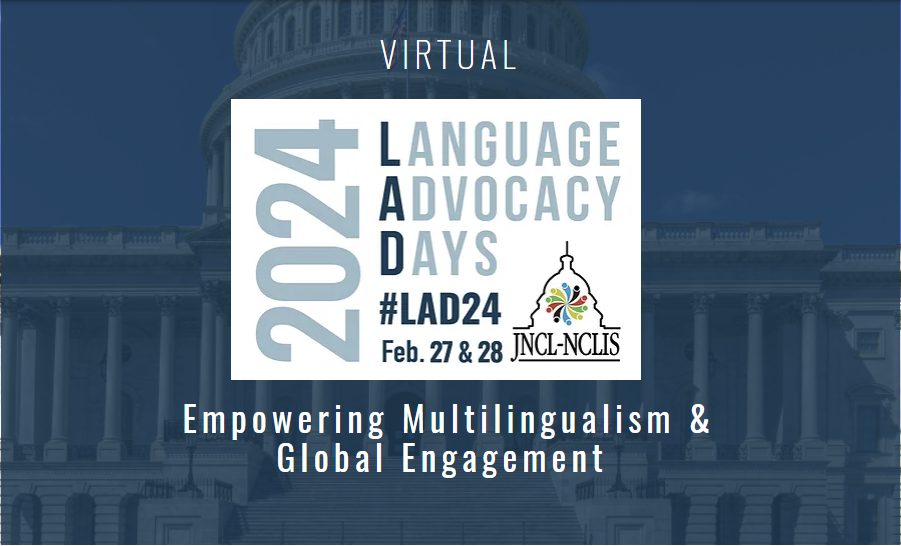Language Advocacy Days (LAD), organized by JNCL-NCLIS, is an annual virtual event where delegates advocate for language education-related issues with their elected officials. LAD aims to address challenges in language education and promote policies that support language learning. For delegates, attending these events means advocating for legislative changes that can improve language education nationwide. It […]
Continue readingLanguage Proficiency Remains Relevant for Both High-Skill and Low-Skill Jobs
The job market can and does change. It is influenced by economic conditions, technological advancements, and gradual cultural shifts. However, positions that were in high demand for bilingual employees across various industries a few years ago may continue to be relevant today. These opportunities can be categorized into both “high-skilled” and “low-skilled” positions. “A skilled […]
Continue readingThe Power of Your Workforce’s Command of Global English to Do Business
In the realm of international business, English has become the prevailing lingua franca (a language used between people not sharing the same native language to facilitate communication), bridging the communication gap among individuals of varying native languages. The primary objective is to ensure seamless collaboration among colleagues, clients, and customers, all in pursuit of achieving […]
Continue readingLeveraging Language as an Employability Asset in Career and Technical Education
The Association for Career and Technical Education (ACTE) announced February is CTE Month (https://www.acteonline.org/why-cte/cte-awareness/cte-month/), and one technical school in Pennsylvania is launching an innovative credentialing initiative to kick the month off with style.
Continue readingLanguage Proficiency: A Compliance Issue in Healthcare Amidst Tech Advances
In an era where AI-driven tools significantly influence the healthcare scenario, the following questions arise: Why should healthcare institutions diligently monitor and assess their employees’ language skills? Could technology reduce the need for human intervention in healthcare settings and reshape the landscape of language proficiency testing?
Continue readingHow Many Spanish Dialects Are There?
Over half a billion people speak Spanish. Spanish is also the national language in 20 countries and one dependent territory. With its global reach, it’s no surprise that the language has variations across diverse regions and countries. Understanding the number of dialects is vital for native speakers, educators, linguists, and language learners as it impacts […]
Continue readingLanguage Testing for Interpreters
Language proficiency testing helps individuals start their journey toward becoming certified interpreters. It also helps individuals demonstrate language proficiency to prospective employers and makes it easier for employers to evaluate prospective candidates’ language skills. Using a reliable and valid language proficiency test helps companies ensure they hire the most qualified candidates. A language proficiency test […]
Continue readingBest Jobs for Bilingual Chinese Speakers
According to Statista data from 2023, Chinese is the second most-spoken language in the world, with more than 1.1 billion Mandarin Chinese speakers. As a result, the ability to speak Chinese has become an important skill in the workforce — many companies seek employees who can effectively communicate with clients and partners in China or conduct […]
Continue readingElevating Your Language Proficiency and Role in Delivering Quality Healthcare
Is your proficiency in multiple languages the missing link needed to enhance the ability of the healthcare system to serve patients with limited English skills? What lies ahead for multilingual professionals in healthcare? Will ongoing training and assessments remain crucial for your career relevance in healthcare, even with the integration of artificial intelligence into the […]
Continue readingLanguage at Work: Leveraging the Power of AI in Language Education, Part 2
By Dan Edwards, Ed.D. and Kevin Gaugler, Ph.D. From the learner’s perspective, AI might turn out to be an ideal complement to Steven Krashen’s Input Hypothesis. According to Krashen, language learners advance by understanding input that is slightly beyond their current level of comprehension, often denoted as ””i+1,” where ‘i’ represents the learner’s current level […]
Continue reading








